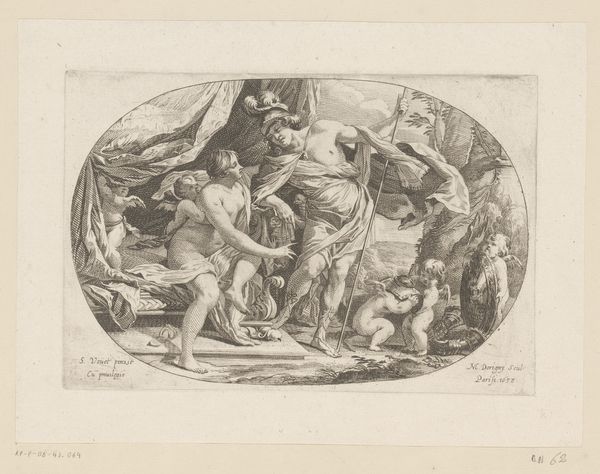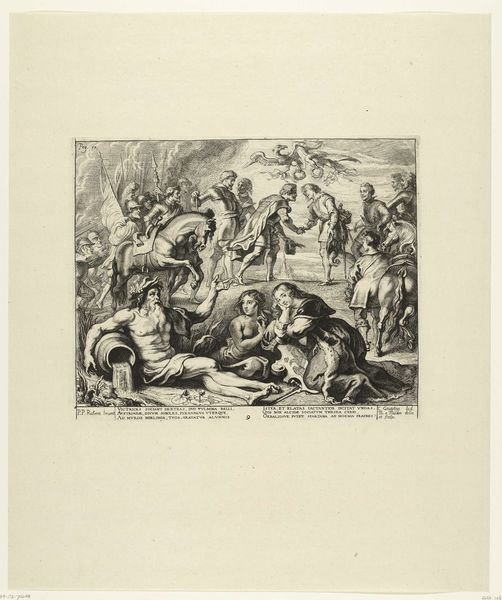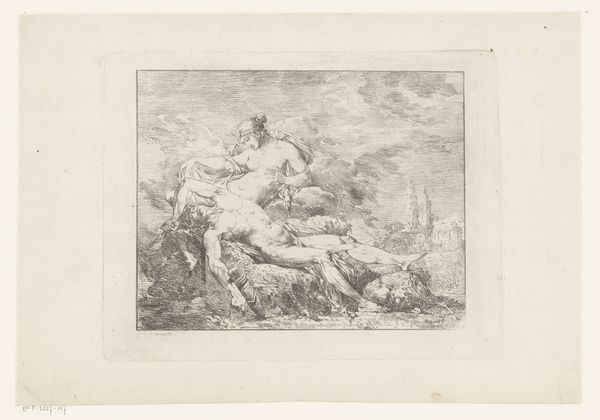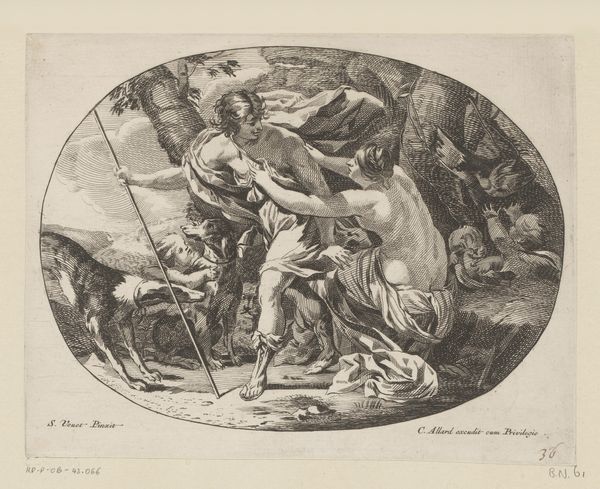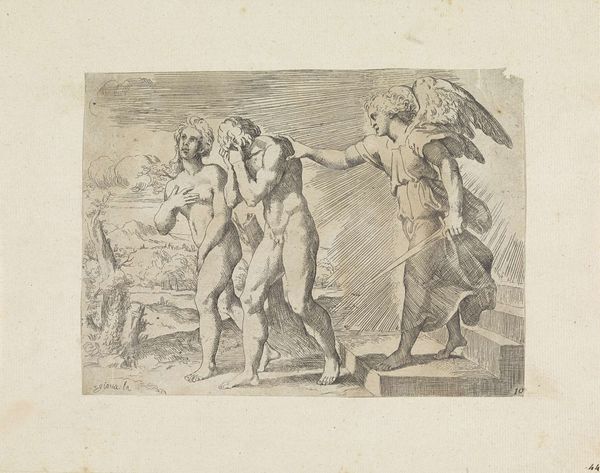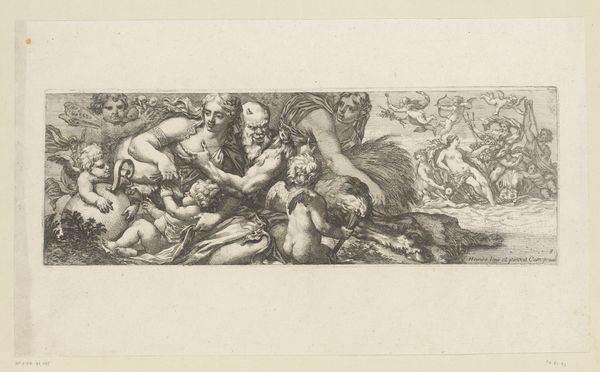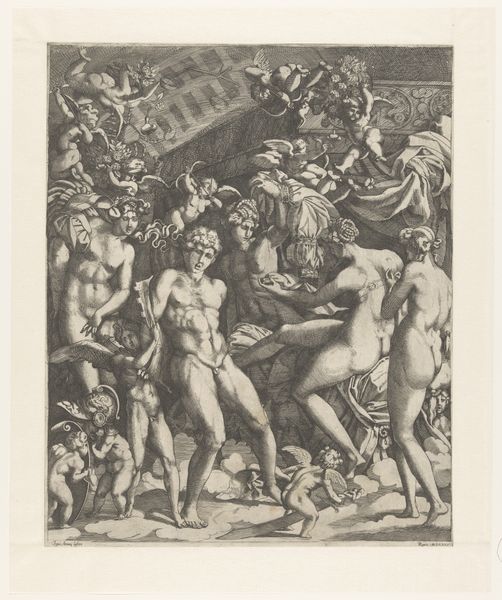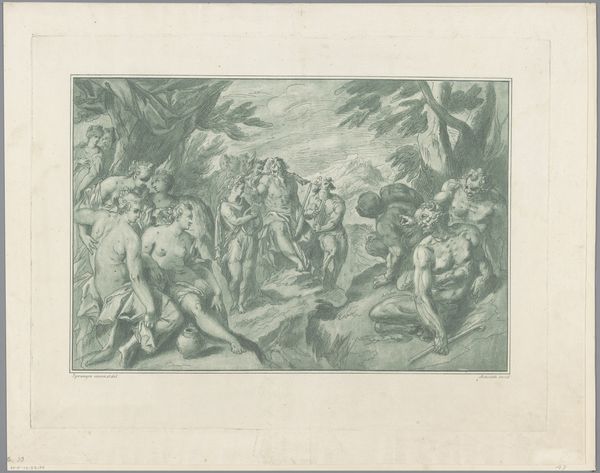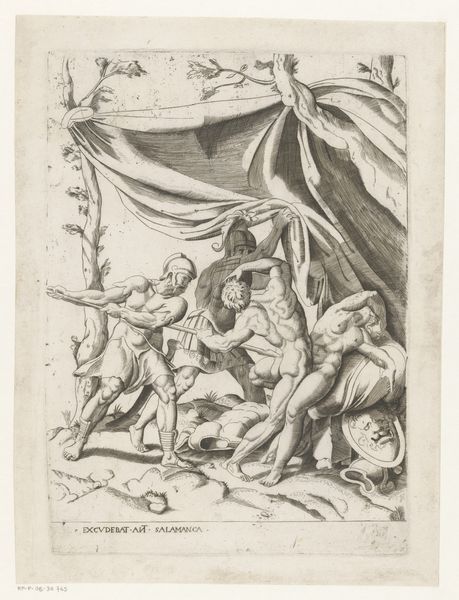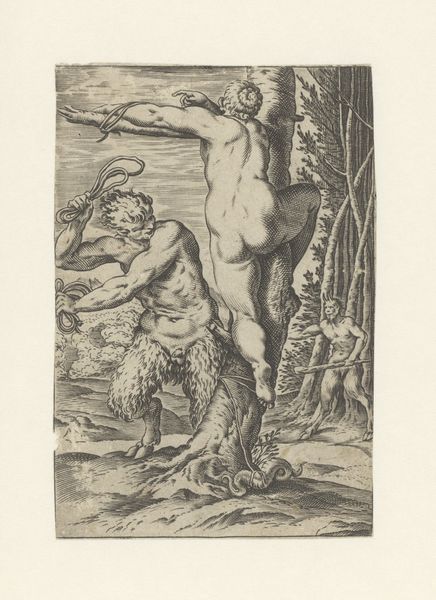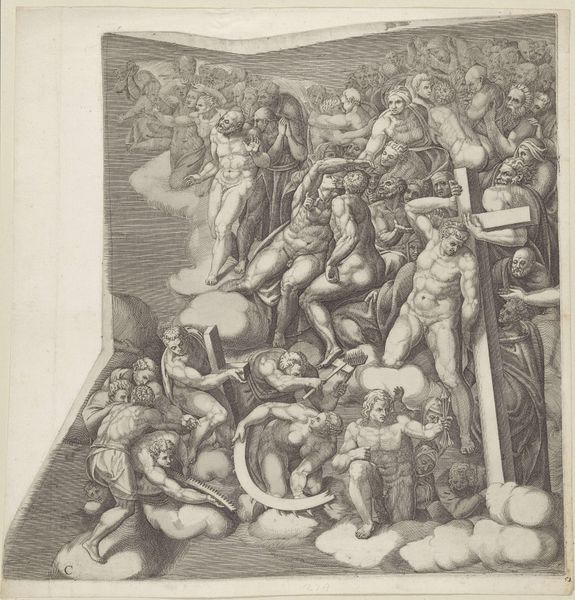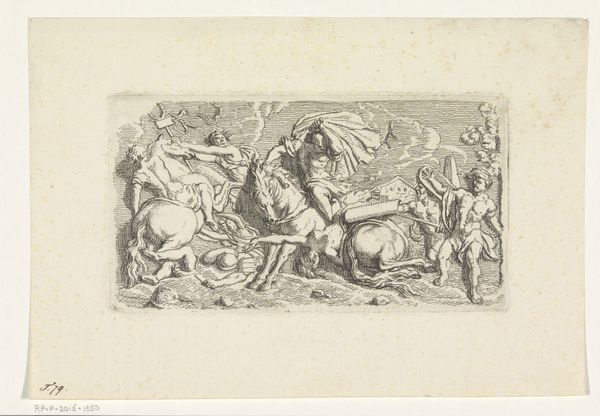
print, engraving
#
narrative-art
# print
#
figuration
#
history-painting
#
italian-renaissance
#
engraving
#
christ
Dimensions: height 239 mm, width 150 gr
Copyright: Rijks Museum: Open Domain
Curator: Welcome. We are looking at "Opstanding," an engraving from somewhere between 1521 and 1624 currently held in the Rijksmuseum. Editor: Immediately, the drama grabs you. The dynamism in the rising figure against those contorted, fallen forms evokes themes of hope emerging from chaos and oppression, very striking for its time, especially through the lens of class and religious conflict. Curator: Let's look closer at that dynamism. The composition, almost arch-like, emphasizes the central figure. Notice the careful interplay of light and shadow created by the engraving technique. It accentuates musculature, lending the central figure—Christ—a distinct visual power and clarity against the blurred outlines and postures below. Editor: Yes, and I interpret the obscured, falling figures around Christ as visual metaphors. Consider them the establishment overthrown, or society transformed. This artwork makes powerful statements about liberation from structures and strictures. Its Italian Renaissance style can seem exclusionary on the surface, but that central image resonates beyond purely theological frameworks. It makes an intersectional argument. Curator: Your point about class and power structures offers compelling perspectives. The linear quality of the lines and shapes directs the viewer’s eye upward, and in conjunction with the positioning of Christ above the other figures, evokes hierarchies. There is, I think, undeniable precision in its rendering. Editor: I see your argument, though I can't agree about exclusion. It represents not merely an escape but a tangible reformation; the engraving foreshadows later egalitarian motifs and their challenges. That visual rhetoric could serve diverse communities seeking change. Its enduring appeal reflects that transformative power for all groups marginalized in their day. Curator: Regardless of our diverging interpretations, "Opstanding" displays mastery of form and technique; it is successful visual rhetoric. Editor: It reminds us art history isn’t static, but engaged. Let's challenge traditions together.
Comments
No comments
Be the first to comment and join the conversation on the ultimate creative platform.
